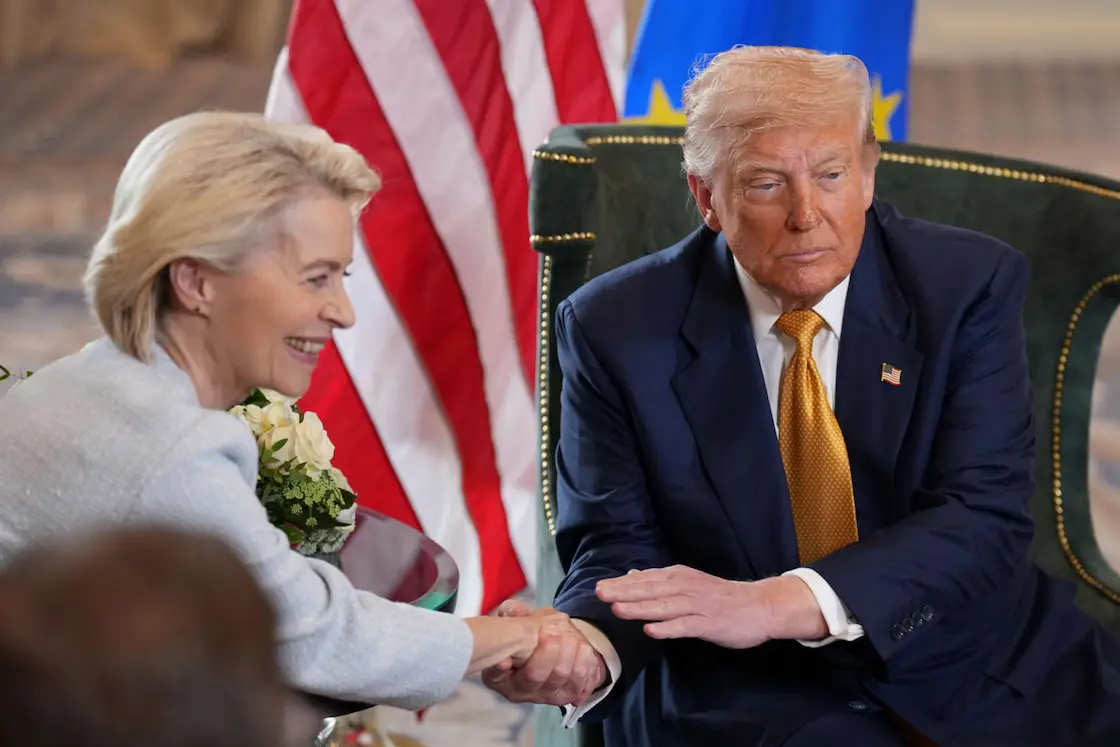
The EU and US forge a strategic pact to counter China's influence, boosting economic ties, defense unity, and democratic values
A Pact Forged in a Shifting World Order
The New Atlantic Alliance – In a world increasingly defined by geopolitical flux, the European Union and the United States have taken a decisive step: sealing a strategic pact aimed at counterbalancing China’s growing global influence. This isn’t just another diplomatic handshake, it’s a recalibration of Western priorities, a signal that the transatlantic relationship is evolving to meet the challenges of a multipolar world.
Table of Contents
The pact, signed in Brussels after months of negotiation, spans economic cooperation, technological alignment, and coordinated foreign policy. At its heart lies a shared concern: China’s assertive posture in global trade, its expanding military footprint, and its influence over critical supply chains and emerging technologies. For both Washington and Brussels, the agreement is a declaration that the liberal democratic order still has teeth and ambition.
But this alliance is not merely reactive. It’s proactive, forward-looking, and rooted in a recognition that the 21st century will be shaped not just by competition, but by collaboration among like-minded powers. The EU and US are betting that unity, not fragmentation, is the key to resilience.
Economic Armor: Trade, Tech, and Supply Chain Sovereignty
One of the pact’s most significant pillars is economic coordination. The EU and US have committed to harmonizing standards in critical sectors such as semiconductors, green energy, and digital infrastructure. This is more than bureaucratic alignment, it’s a strategic move to reduce dependency on Chinese manufacturing and technology.
• Semiconductors: With China investing heavily in chip production, the pact includes joint funding for research and development, as well as incentives for companies to build manufacturing plants in Europe and North America.
• Green Tech: The two powers aim to lead the global transition to clean energy, setting shared standards for electric vehicles, battery production, and carbon capture technologies.
• Digital Governance: From AI ethics to cybersecurity, the EU and US are crafting a common framework to ensure democratic values underpin the digital future.
This economic front is not about isolationism it’s about creating a resilient ecosystem that can withstand shocks, whether they come from supply chain disruptions or coercive trade practices. By pooling resources and aligning policies, the EU and US are positioning themselves as architects of a new economic order.
Strategic Unity: Defense, Diplomacy, and the Indo-Pacific Pivot
Beyond economics, the pact signals a deepening of strategic cooperation. NATO remains the cornerstone of transatlantic defense, but this agreement goes further, extending coordination into diplomatic strategy and regional engagement especially in the Indo-Pacific.
• Defense Integration: Joint military exercises, intelligence sharing, and coordinated defense procurement are on the rise. The goal is interoperability, not just in hardware, but in strategic thinking.
• Diplomatic Alignment: The EU and US have pledged to present a united front in international forums, from the UN to the WTO, particularly on issues like human rights, maritime security, and digital sovereignty.
• Indo-Pacific Engagement: Recognizing China’s influence in Asia, the pact includes commitments to deepen ties with regional democracies like Japan, India, and Australia. This isn’t about containment, it’s about balance.
The strategic dimension of the pact reflects a broader understanding: global stability depends on more than military might. It requires diplomatic agility, regional partnerships, and a shared narrative that champions openness, transparency, and rule of law.
Values in Action: Democracy, Human Rights, and the Information War
Perhaps the most profound aspect of the pact is its reaffirmation of shared values. In an era where authoritarian models are gaining traction, the EU and US are doubling down on democracy not just as a political system, but as a global brand.
• Human Rights Advocacy: The pact includes joint initiatives to support civil society, independent media, and anti-corruption efforts in vulnerable regions.
• Digital Democracy: With disinformation campaigns on the rise, the EU and US are investing in tools to protect electoral integrity and combat online manipulation.
• Education and Exchange: Cultural diplomacy is back. Expanded student exchange programs, joint research grants, and public diplomacy campaigns aim to foster mutual understanding and counter ideological polarization.
This isn’t just idealism, it’s strategic. The battle for influence is as much about narratives as it is about numbers. By promoting democratic values, the EU and US are offering an alternative to authoritarian governance, one rooted in transparency, accountability, and human dignity.
Looking Ahead: A Pact of Possibility
The EU-US pact is not a silver bullet. It won’t erase the complexities of global politics or magically resolve tensions with China. But it is a bold step, a recognition that the challenges of the future require unity, creativity, and courage.
This new Atlantic Alliance is more than a response to China’s rise. It’s a statement of intent: that liberal democracies can adapt, innovate, and lead in a world that is increasingly interconnected and contested.
As the ink dries on this historic agreement, one thing is clear: the transatlantic relationship is no longer just about shared history. It’s about shared destiny.
Also read – How EU’s Aggressive Crackdown on Russian Oil Sends Shockwaves Through India’s Energy Landscape